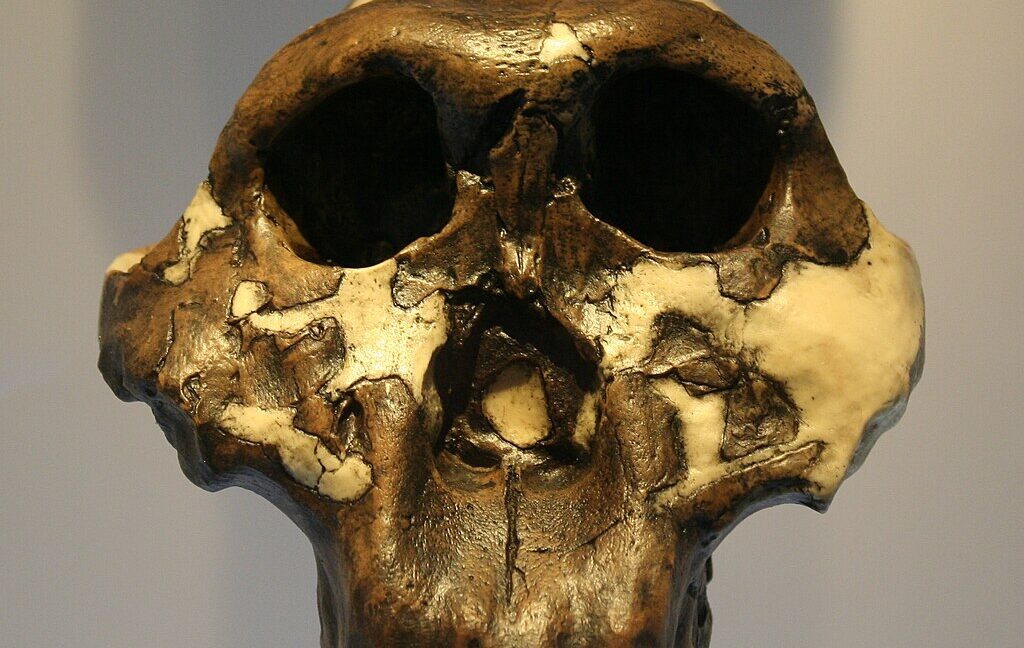- Get link
- X
- Other Apps
- Get link
- X
- Other Apps

Ancient Proteins Unlock Secrets of Enigmatic Hominin Species
The study of ancient DNA has revolutionized our understanding of human origins, illuminating our relationships with Neanderthals and revealing the existence of Denisovans. However, DNA degrades over time, especially in warmer climates like Africa, limiting how far back we can peer into our ancestral past. Now, a groundbreaking study offers a new approach: analyzing ancient proteins.
An international team of researchers has successfully extracted and analyzed fragments of enamel proteins from 2 million-year-old teeth belonging to Paranthropus robustus. This innovative technique provides valuable insights into a hominin species that has long puzzled scientists.
Decoding Paranthropus robustus: A Complex Puzzle
Fossils classified as Paranthropus first appear in the fossil record nearly 3 million years ago, coexisting with both australopithecines and early Homo species. Identifying the exact number of Paranthropus species has been challenging, with four currently recognized. The situation is further complicated by shared characteristics with certain Australopithecus species, raising questions about potential interbreeding. Adding to the complexity is the significant variation in size among Paranthropus remains.
One prevailing hypothesis suggests that the size differences may reflect sexual dimorphism – distinct size variations between males and females. However, testing this hypothesis has proven difficult due to the limitations of traditional fossil analysis.
Protein Power: A New Window into the Past
The scarcity of DNA samples older than 20,000 years from Africa, where Paranthropus remains are exclusively found, necessitated a different approach. The research team turned to the proteins found in tooth enamel. While these proteins degrade over time, breaking into smaller fragments and undergoing chemical alterations, the robust nature of enamel offers greater preservation potential compared to DNA.
Key Findings from the Protein Analysis:
- Confirmation that the analyzed remains likely belong to a single species, Paranthropus robustus, despite size variations.
- The identification of a male-specific protein suggests that size is not necessarily linked to sex, supporting the possibility of significant sexual dimorphism within the species.
Implications and Future Directions
This study demonstrates the power of proteomic analysis in unraveling the mysteries of human evolution. By analyzing ancient proteins, scientists can gain insights into the genetics, biology, and relationships of extinct hominin species, even when DNA is unavailable.
The ability to analyze ancient proteins opens a new frontier in paleoanthropology. It allows researchers to investigate species previously beyond our reach due to DNA degradation. Future studies utilizing this technique promise to further refine our understanding of human evolution and the complex history of our ancestors.
This innovative approach not only sheds light on Paranthropus robustus but also provides a valuable tool for future investigations into other enigmatic hominin species. It's a testament to the ingenuity of scientific inquiry and the relentless pursuit of knowledge about our origins.
Tags: Ancient DNA, Neanderthals, Denisovans, Enamel proteins, Paranthropus robustus, Fossil teeth, Genetics, Human evolution, Species identification, Male specific protein
Source: https://arstechnica.com/science/2025/05/researchers-study-extinct-hominins-using-enamel-proteins-from-their-teeth/
Ancient DNA
Denisovans
Enamel proteins
Fossil teeth
Genetics
Human evolution
Male specific protein
Neanderthals
Paranthropus robustus
Species identification
- Get link
- X
- Other Apps
Comments
Post a Comment